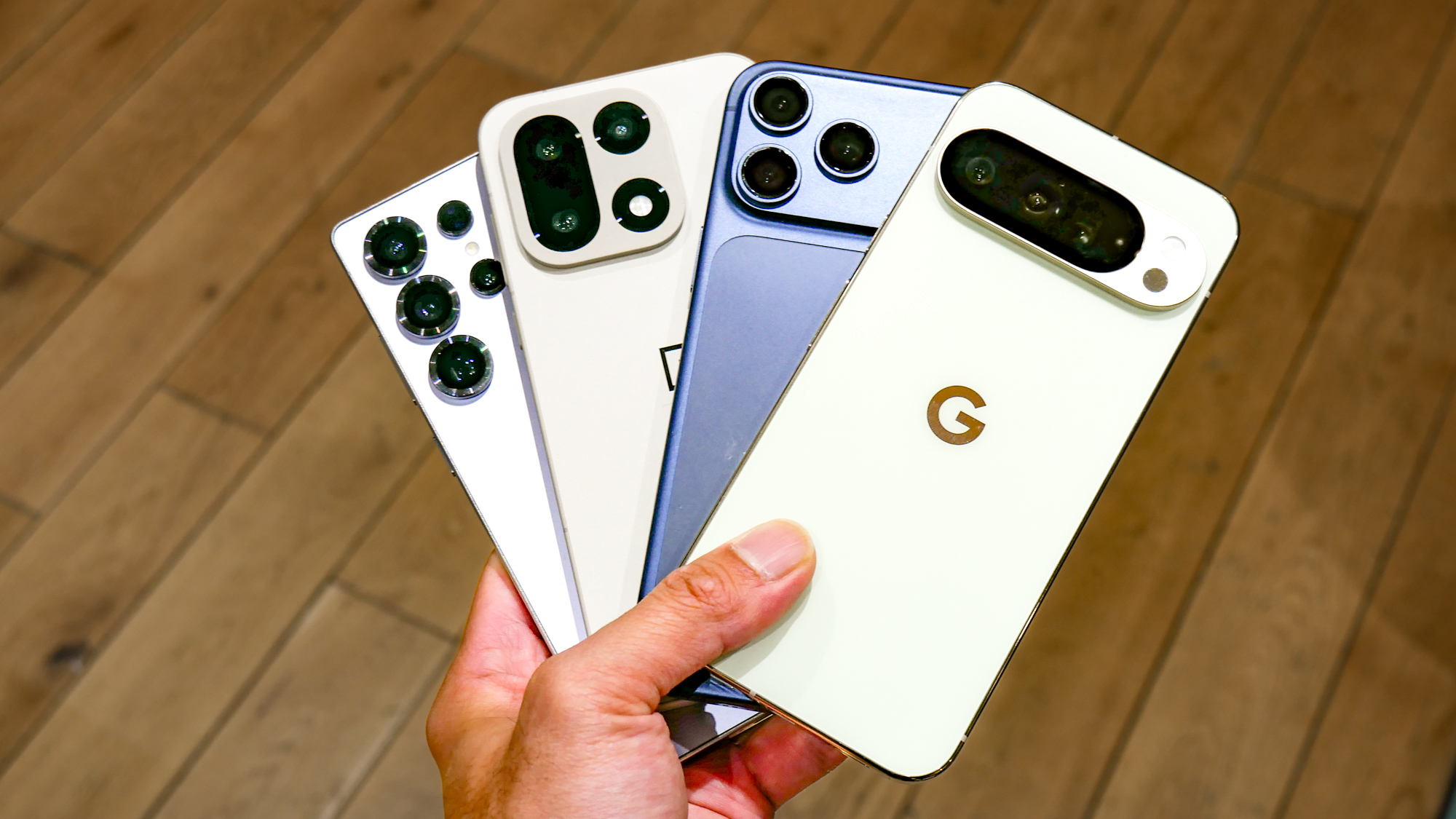I shot full-resolution photos with the latest iPhone, Pixel, Galaxy, and OnePlus to see if it really makes a difference
The results are really surprising and confirm my suspicions

Do more megapixels actually make a difference? Just about every major flagship phone lets you take photographs using the camera’s full resolution, so I wanted to find out for myself using some of the best phones you can get right now.
I’ve always been curious about this myself considering how the best camera phones by default shoot at lower resolutions, either 12MP or 24MP depending on the phone. That’s why I’m taking the iPhone 17 Pro Max, Galaxy S25 Ultra, Pixel 10 Pro XL, and OnePlus 15 to the test to find out.
In order to do this, you need to manually switch to full resolution mode — which is usually found somewhere in the camera settings. The case for shooting at these higher resolution modes is that they should be able to capture more detail, while also giving you extra room to crop the image later on without quality loss. Here’s what I found.
Apple iPhone 17 Pro Max: 24MP vs 48MP
Starting with the iPhone 17 Pro Max, it shoots by default at the lower resolution of 24MP by default — but you also have the options for 12MP and 48MP.
With the first set above with the buildings overlooking Bryant Park on a cloudy day, the first thing that immediately stands out is the brighter picture of the 48MP shot. Beyond that, I don’t see any sort of improvement that proves shooting at full resolution makes a difference. Both the sign at the bottom and the buildings in the background have the same level of detail.
For my second test, I shot these drinks on a rack to see if one can capture more of the fine print all over the labels. When I zoom in, there’s practically no difference.
Lastly, there’s the Call of Duty billboard near Times Square that looks exactly the same at 24MP and 48MP resolution. If you look at the crop of the ESRB rating I’ve shared above, the words are slightly more defined with the 48MP sample.
Get instant access to breaking news, the hottest reviews, great deals and helpful tips.
There’s also the tiny yellow sticker on the truck towards the bottom, which I can read out better with the 48MP shot.
Samsung Galaxy S25 Ultra: 12MP vs 100MP
If there’s one phone that goes over-the-top, it’s none other than the Galaxy S25 Ultra. On paper, its 200MP main camera dwarfs all the 50MP sensors other phones tend to have — so it should show more of a difference compared to its 12MP default shooting resolution. Just so that you know, the 12MP shots have a resolution of 4,000 x 3,000 pixels, while 200MP shots come out to 16,320 x 12,240 pixels.
Unfortunately, the shot from Bryant Park above shows no major difference between the two, including their dynamic range performance. In fact, I’d say that the 12MP sample looks better in practically every part of the shot.
While the overall shots may look similar with the drink bottles, I can see that the 200MP sample sharpens the words on the label by a smidge. Although I wouldn’t say it’s a night and day difference.
That same sharpness exists with the Call of Duty billboard, especially when I crop into the ESRA rating where the edges of the letters are more defined. When I pan over to the left at the building, the 200MP sample also shows those individual bricks better.
I think it’s worth pointing out the amount of pixels each mode captures. With the 200MP samples, it captures over 15 times the number of pixels than the 12MP shots. Yet, I don’t see 15x improvement to the details.
Google Pixel 10 Pro XL: 12MP vs 50MP
Similar to the other phones so far, there’s not an overwhelming improvement with the shots from Bryant Park. However, there are small details throughout the images that show more detail. For example, I can better make out the individual blocks of bricks with the buildings in the background with the 50MP sample — while the signs in the foreground look a tiny bit sharper.
Likewise, that sharpness extends to the miniscule words on the labels above. Believe me, I can still read the words out from the 12MP shot, but the edges of the words are better defined with the 50MP sample.
I think the Pixel 10 Pro XL does show more of a difference between the two resolutions, as the 50MP shot of the Call of Duty sign again shows better sharpness and detail with the closeup of the ESRB rating. When I look at the same yellow sticker slapped onto the side of the truck, I can actually make out the “no diesel fuel” on there with the 50MP photo.
I can’t say what to credit for the slight improvement with the 50MP samples. Perhaps a lot of it could be due to Google’s image processing algorithms working in the background to draw out detail from every pixel, but while there’s an improvement, I still wouldn’t say it’s enough to justify shooting at full resolution exclusively.
OnePlus 15: 12MP vs 50MP
For my last test, I only have the side-by-side comparison shot of the Call of Duty billboard taken with the OnePlus 15. What it reveals is that there’s no difference whatsoever between shooting at 12MP versus 50MP.
Everything, including the crop of the ESRB rating, look identical. I’m a little disappointed, too, because the 50MP shot comes out to 13.5MB — whereas the 12MP takes up 5.9MB of storage. That’s a huge difference considering that the outcome is the same.
Bottom Line

Well, this proves my suspicion all along: there’s no incentive for me to shoot at the highest resolution. Out of all the phones I’ve tested here, I would say the Galaxy S25 Ultra and Pixel 10 Pro XL show the most difference — but I wouldn’t go far to say it’s a huge stretch.
Another reason why you should stick to shooting at the default resolution is because you’ll save yourself from going through your phone’s storage faster. The Galaxy S25 Ultra is the perfect example here because the 200MP samples I shot came out to about 45MB on average, versus the 4MB file sizes of the 12MP shots.

Follow Tom's Guide on Google News and add us as a preferred source to get our up-to-date news, analysis, and reviews in your feeds.
More from Tom’s Guide
- Google has patched a critical Chrome zero-day flaw — update your browser immediately
- Google’s Gemini 3 is here — and it’s already beating ChatGPT in key benchmarks
- I just discovered the best Google Maps feature you (probably) haven't tried yet

John’s a senior editor covering phones for Tom’s Guide. He’s no stranger in this area having covered mobile phones and gadgets since 2008 when he started his career. On top of his editor duties, he’s a seasoned videographer being in front and behind the camera producing YouTube videos. Previously, he held editor roles with PhoneArena, Android Authority, Digital Trends, and SPY. Outside of tech, he enjoys producing mini documentaries and fun social clips for small businesses, enjoying the beach life at the Jersey Shore, and recently becoming a first time homeowner.
You must confirm your public display name before commenting
Please logout and then login again, you will then be prompted to enter your display name.
